Top 10: Customer Marketing software
Updated: July 31, 2023
Customer marketing software is a specialized tool designed to help businesses build and maintain strong relationships with their existing customers. This software enables marketers to create targeted and personalized marketing campaigns aimed at engaging, retaining, and upselling to current customers. It typically includes features such as customer segmentation, email marketing, loyalty program management, and customer feedback collection. By analyzing customer data and behavior, customer marketing software allows businesses to gain insights into customer preferences and needs, tailoring marketing efforts to each individual customer. The goal of customer marketing software is to foster customer loyalty, drive repeat purchases, and turn satisfied customers into brand advocates, ultimately leading to increased customer lifetime value and overall business growth.
Some of the most popular customer marketing software options are listed below.
See also: Top 10 Marketing software
See also: Top 10 Marketing software
2021. Ometria raises $40M to automate marketing for retailers
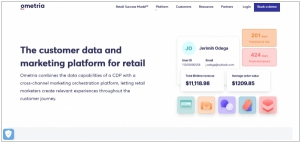
The "AI-powered" customer marketing platform Ometria has successfully raised $21 million in a Series B funding round. Ometria specializes in enabling brands and retailers to personalize marketing messages for their customers. Its primary competitors include email service providers such as Emarsys, Sailthru, Selligent, Bronto, and Dotmailer, as well as behavioral marketing tools like CloudIQ, SaleCycle, Yieldify, and customer insight companies including More2 and AgileOne. Ometria's "Co-Marketer" platform leverages data science to automatically create and optimize personalized marketing experiences across various communication platforms. Notable customers utilizing the platform include Steve Madden, Aden + Anais, Pepe Jeans, MADE.com, Notonthehighstreet.com, Hotel Chocolat, Feelunique, and others.
2020. Outfunnel picks up €1.1M pre-seed to bridge the gap between marketing and sales
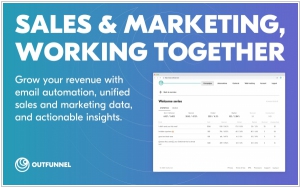
Startup Outfunnel has secured €1.1 million in funding for its software, which aims to bridge the gap between marketing and sales functions within companies. Outfunnel's innovative "revenue marketing automation tool" facilitates collaboration between sales and marketing teams to drive revenue growth. The software integrates seamlessly with CRMs, including Pipedrive, Copper, and HubSpot CRM (with plans to support additional CRMs in the future). It offers features such as automated emails synchronized with CRM data, comprehensive reporting, and precise targeting. With its compelling offering, Outfunnel has already attracted more than 400 paying customers.
2019. Customer marketing software Ometria raised $21M
Ometria, an AI-powered customer marketing platform, has secured $21 million in Series B funding. This investment will be utilized to expedite Ometria's product development, enabling the platform to enhance its specialized retail marketing capabilities and further innovate its AI-driven technology. Ometria's unique selling point lies in addressing the growing consumer intolerance towards irrelevant communication, particularly in today's highly competitive retail landscape. While its primary competitors span various domains such as email service providers (Emarsys, Sailthru, Selligent, Bronto, Dotmailer), behavioral marketing tools (CloudIQ, SaleCycle, Yieldify), and customer insight companies (More2, AgileOne), Ometria asserts that none of these companies were specifically developed for retail or focused on creating and utilizing a unified predictive profile for each customer.
2019. SugarCRM moved into marketing automation with Salesfusion acquisition
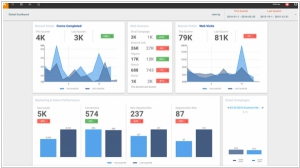
In an effort to strengthen its marketing automation capabilities, SugarCRM has made the acquisition of Salesfusion. Recognizing the need for improvements in the marketing automation aspect of their platform, SugarCRM CEO Craig Charlton opted to acquire a company rather than building the functionality from scratch, considering it a faster approach. SugarCRM has been undergoing a transitional phase as it faces challenges in keeping pace with industry giants, especially Salesforce. Last summer, the company entered the private equity market and secured a significant investment from Accel-KKR, reportedly a nine-figure deal according to various reports and characterized as a leveraged buyout by PitchBook.
2019. Mailchimp expanded from email to full marketing platform
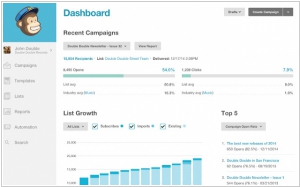
Mailchimp, renowned for its popularity as a customer-oriented email tool, is expanding its offerings to provide a comprehensive marketing platform tailored for smaller organizations. This new platform will incorporate a range of innovative products, including lead tracking and management technology, domain purchase and website building capabilities, ad retargeting on Facebook and Instagram, and social media management features. Additionally, Mailchimp will leverage artificial intelligence to provide business intelligence insights and recommendations on effective marketing strategies, targeting specific audiences. This development is particularly noteworthy due to the vast amount of data Mailchimp has accumulated from its 4 billion user base, encompassing individual responses to emails and other services offered by the platform.
2019. Zoho unveiled unified marketing automation software - MarketingHub
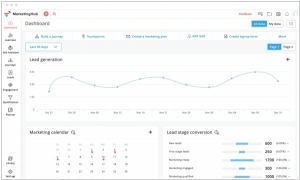
Zoho has introduced MarketingHub, a comprehensive marketing automation software that integrates the strengths of a unified, robust platform with the capabilities of individual marketing tools. This powerful solution enables you to generate a higher volume of leads, convert them into customers, and foster long-term customer retention. MarketingHub empowers you to craft personalized lead-to-customer journeys and execute targeted marketing campaigns. With this tool at your disposal, you will gain valuable insights into various aspects, including the reasons behind website visits, the current stage of your leads, and the effectiveness of recent successful campaigns in delivering greater returns.
2018. Influencer marketing startup Mavrck raised $5.8M
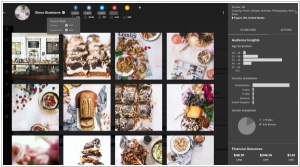
Mavrck has secured an additional $5.8 million in funding, bringing its total raised capital to $13.8 million. This company positions itself as a comprehensive influencer marketing platform, offering a range of tools to streamline and assess the influencer marketing process. Recently, Mavrck unveiled new features specifically designed for Pinterest, where it has achieved the status of an official marketing partner. The company has also made significant strides in enhancing measurement capabilities and combatting fraud. In terms of fraud detection, Mavrck pledges to analyze a "statistically significant sample" of followers of an Instagram account, as well as the accounts that engage with its content, to ascertain whether they are genuine or bots. Renowned companies such as P&G, Godiva, and PepsiCo are among Mavrck's clientele, and the company reports an impressive year-over-year growth of 400 percent in recurring revenue.
2018. Salesforce released new product - Customer 360
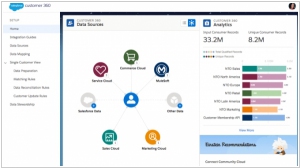
Customer 360 is an innovative software that integrates various customer data components to provide a more cohesive view within the Salesforce product family. Leveraging technology from Salesforce's Mulesoft acquisition, this solution aims to empower customer service representatives by equipping them with a comprehensive understanding of your interactions with the company. By eliminating the need for redundant information sharing, the representative can address your needs more effectively. The primary objective is to consolidate different product functionalities—such as sales, service, community, commerce, and marketing—into a unified customer view. Remarkably, this can be achieved without the need for coding, as highlighted by Salesforce.


